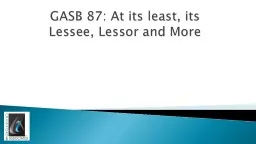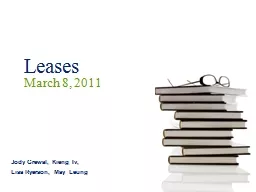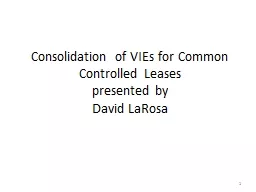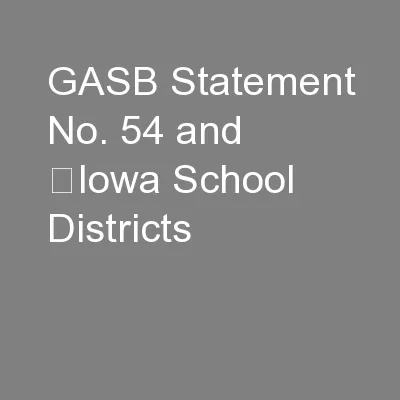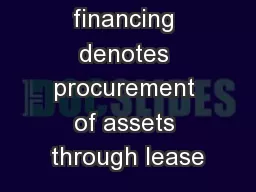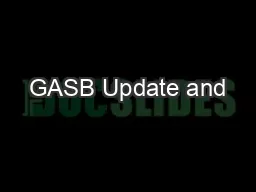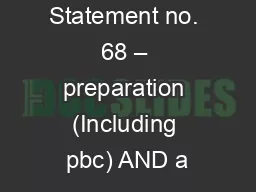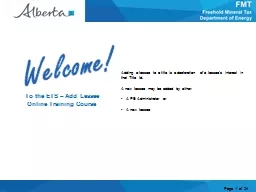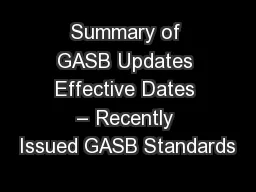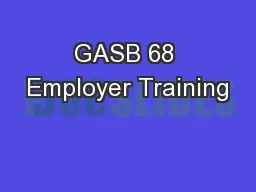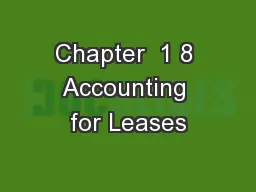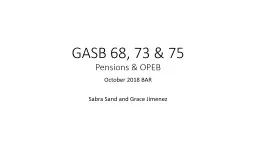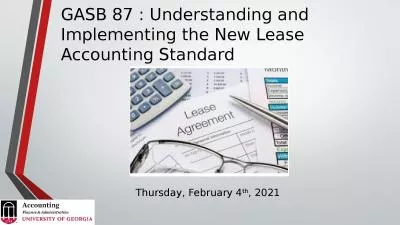PPT-GASB 87: At its least, its Lessee, Lessor and More
Author : tatyana-admore | Published Date : 2019-12-05
GASB 87 At its least its Lessee Lessor and More What we will cover Discuss an overview of the single model for recording leases capitalization Discuss lessor considerations
Presentation Embed Code
Download Presentation
Download Presentation The PPT/PDF document "GASB 87: At its least, its Lessee, Less..." is the property of its rightful owner. Permission is granted to download and print the materials on this website for personal, non-commercial use only, and to display it on your personal computer provided you do not modify the materials and that you retain all copyright notices contained in the materials. By downloading content from our website, you accept the terms of this agreement.
GASB 87: At its least, its Lessee, Lessor and More: Transcript
Download Rules Of Document
"GASB 87: At its least, its Lessee, Lessor and More"The content belongs to its owner. You may download and print it for personal use, without modification, and keep all copyright notices. By downloading, you agree to these terms.
Related Documents

